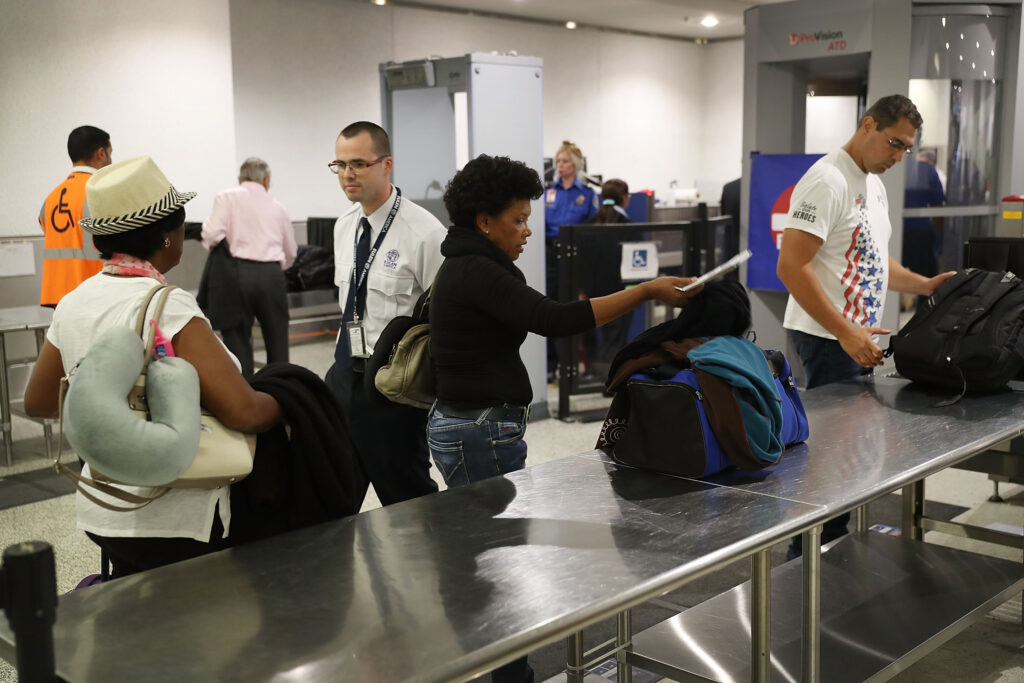Passengers at US airports will no longer have to remove their shoes to pass through security under a new policy unveiled Tuesday, 20 years after the requirement was introduced.Homeland Security Secretary Kristi Noem announced the change to Transportation Security Administration (TSA) rules at a news conference at Washington’s Ronald Reagan National Airport.Passengers at US airports have been required to take off shoes during screenings since 2006, five years after the arrest of “Shoe Bomber” Richard Reid, who had explosives hidden in his footwear onboard.”In those 20 years since that policy was put in place, our security technology has changed dramatically. It’s evolved. TSA has changed. We have a multi-layered whole of government approach now to security,” Noem said.”We are very confident that we can continue to provide hospitality to folks and for American travelers and for those visiting our country, while maintaining the same standard of security for passengers and for our homeland,” she added.Reid, a member of Al-Qaeda, was overpowered by other passengers as he tried to light a fuse on his shoes on an American Airlines flight from Paris to Miami in December 2001.Reid pleaded guilty to terrorism and other charges and is serving a life sentence at a maximum security prison in Colorado.TSA said in a statement on the shoe policy change that other security measures will remain in place.”Other aspects of TSA’s layered security approach will still apply during the TSA checkpoint process. For example, passengers subject must still clear identity verification, Secure Flight vetting, and other processes,” it said.Past attacks — both successful and thwarted — have led to a raft of new airport security measures in recent decades, especially following the September 11, 2001 attacks, in which hijackers flew passenger jets into the Twin Towers in New York as well as the Pentagon.In 2006, British authorities announced they had foiled a terror plot that aimed to blow up several planes in mid-air simultaneously with liquid explosives. Since then, tough restrictions have applied to liquids and gels, such as toothpaste.And electronics have also come in for additional screening in a bid to head off attacks, with passengers required to remove laptops from bags, for instance.
Passengers at US airports will no longer have to remove their shoes to pass through security under a new policy unveiled Tuesday, 20 years after the requirement was introduced.Homeland Security Secretary Kristi Noem announced the change to Transportation Security Administration (TSA) rules at a news conference at Washington’s Ronald Reagan National Airport.Passengers at US airports have been required to take off shoes during screenings since 2006, five years after the arrest of “Shoe Bomber” Richard Reid, who had explosives hidden in his footwear onboard.”In those 20 years since that policy was put in place, our security technology has changed dramatically. It’s evolved. TSA has changed. We have a multi-layered whole of government approach now to security,” Noem said.”We are very confident that we can continue to provide hospitality to folks and for American travelers and for those visiting our country, while maintaining the same standard of security for passengers and for our homeland,” she added.Reid, a member of Al-Qaeda, was overpowered by other passengers as he tried to light a fuse on his shoes on an American Airlines flight from Paris to Miami in December 2001.Reid pleaded guilty to terrorism and other charges and is serving a life sentence at a maximum security prison in Colorado.TSA said in a statement on the shoe policy change that other security measures will remain in place.”Other aspects of TSA’s layered security approach will still apply during the TSA checkpoint process. For example, passengers subject must still clear identity verification, Secure Flight vetting, and other processes,” it said.Past attacks — both successful and thwarted — have led to a raft of new airport security measures in recent decades, especially following the September 11, 2001 attacks, in which hijackers flew passenger jets into the Twin Towers in New York as well as the Pentagon.In 2006, British authorities announced they had foiled a terror plot that aimed to blow up several planes in mid-air simultaneously with liquid explosives. Since then, tough restrictions have applied to liquids and gels, such as toothpaste.And electronics have also come in for additional screening in a bid to head off attacks, with passengers required to remove laptops from bags, for instance.
